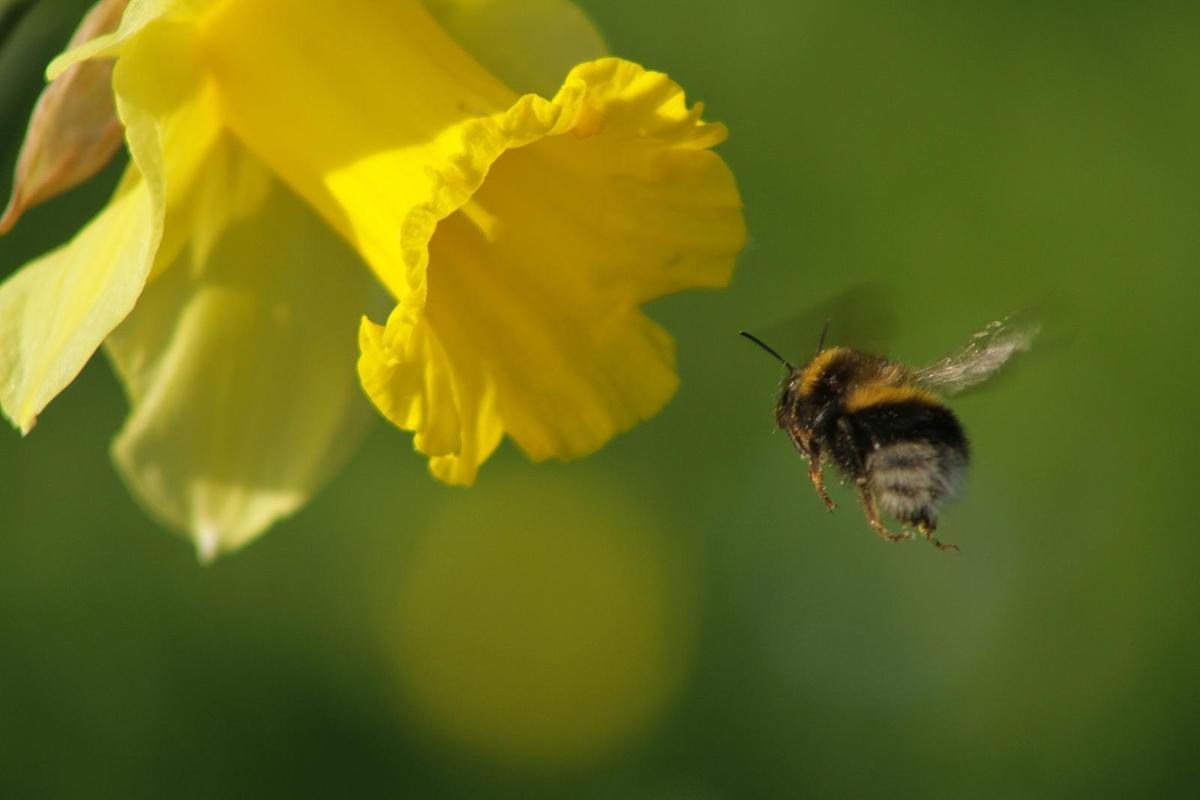In the fairy tale, Goldilocks wanted her porridge not too warm, not too cold, but just right. Bumblebees have a similar reaction to the weather. Scientists have found that their ability to fly suffers if it’s too warm or too cold, especially if the bees are smaller.
The scientists arrived at their findings by attaching bumblebees to a device called a flight mill that let the bumblebees fly in circles in different temperatures between 54 and 86 degrees Fahrenheit. Meanwhile, the scientists measured their distance and speed of flight. They found that the bumblebees’ performance increased steadily as the temperature rose from 54 degrees, and they flew best at 77 to 81 degrees. After that, their speed and distance started to decline. Their research suggests that bumblebees can fly around 1.8 miles at 77 to 81 degrees, a little over half a mile when the temperature rises to 95, and only a few hundred yards when it dips to 50. They also found that smaller bees struggled more than larger bees at lower temperatures.
These details build on what scientists already know about many flying insects—when it’s too cold, their muscles can’t work fast enough to fly well or at all, and when it’s too hot, they can overheat, also impeding their abilities to take to the skies. With climate change, smaller bumblebees that live in colder, northern climates could actually be able to fly better. On the other hand, bumblebees that live in warmer, southern climates are likely to suffer. For now, bees, like us, will keep wishing for perfect weather.









